Phytoplankton, organic matter levels are primary concerns for pond operators
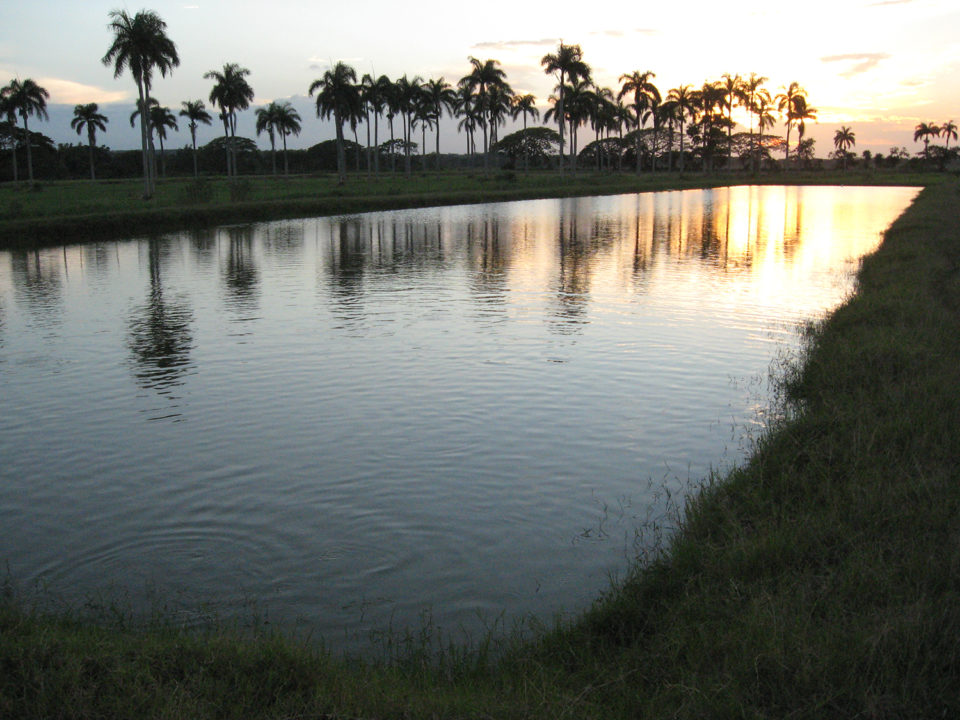
Aquaculture is becoming increasingly intensive through application of feeds and often with supplemental mechanical aeration. Nevertheless, there is still considerable use of commercial fertilizers such as urea and triple superphosphate. Many factors influence the efficiency of commercial fertilizers in aquaculture ponds.
Promoting and sustaining phytoplankton
The first factor relates to applying enough nitrogen and phosphorus to cause sufficient but not excessive phytoplankton blooms. Optimum rates vary with ambient concentrations of nutrients in pond water, but most ponds will respond with more phytoplankton growth to additions of nitrogen and phosphorus – especially phosphorus. Many aquaculturists believe that freshwater ponds require mainly phosphorus while ponds with brackish water or seawater require mainly nitrogen. This opinion often is incorrect. A literature review published in 2007 in Ecology Letters by several prominent ecologists revealed that freshwater, marine, and terrestrial ecosystem responded with greater productivity to additions of both of these nutrients on an approximately equal scale.
Phytoplankton contain 10 to 15 times more nitrogen than phosphorus. This has led to the opinion of fertilizers for ponds needing 10 to 15 times as much nitrogen as phosphorus. Actually, phosphorus is strongly adsorbed by bottom soils and not recycled appreciably. Nitrogen is more strongly recycled, and ponds also contain certain species of heterotrophic bacteria and autotrophic cyanobacteria (blue-green algae) that fix nitrogen. A ratio of nitrogen:phosphorus less than 10 to 15:1 will provide a 10 to 15:1 ratio of the two nutrients.
Research at Auburn University revealed that a N:P2O5 ratio of 2:1 was optimum in freshwater ponds at that location – this is an N:P ratio of roughly 5:1. Moreover, at relatively low fish production levels, nitrogen fertilization can be omitted or greatly diminished in ponds with a two- to five-year history of applications of both nutrients. Microbial decomposition of accumulated organic matter in bottom soil releases adequate nitrogen for phytoplankton blooms. In older ponds, monoammonium phosphate (12% N-52% P2O5-0% K2O) or diammonium phosphate (18-46-0) are excellent fertilizer choices. These fertilizers contain some nitrogen, and as much phosphorus as does triple superphosphate (0-46-0). Mono- and diammonium phosphate also dissolve faster than does triple superphosphate.
Phosphate also is more available to the water column in ponds with bottom soil pH of 7 or 8 and with alkalinity of 30 to 40 mg/L or more than it is in acidic ponds. Liming material can increase alkalinity and bottom soil pH.
Ammonium containing fertilizers are acid-forming. Urea is acid-forming because it hydrolyzes to ammonia. Ammonia is oxidized to nitrate by nitrifying bacteria releasing hydrogen ion to neutralize alkalinity. Nitrate in fertilizers may be reduced to nitrogen gas by denitrifying bacteria in bottom soils releasing hydroxyl ion that bolsters alkalinity.
Higher aquatic plants and large, filamentous algae known as macrophytes compete with phytoplankton for nutrients. Fertilized ponds with infestation of macrophytes may not develop phytoplankton blooms as a result. Water depth less than 1 meter should be avoided to limit light penetration and macrophyte growth.
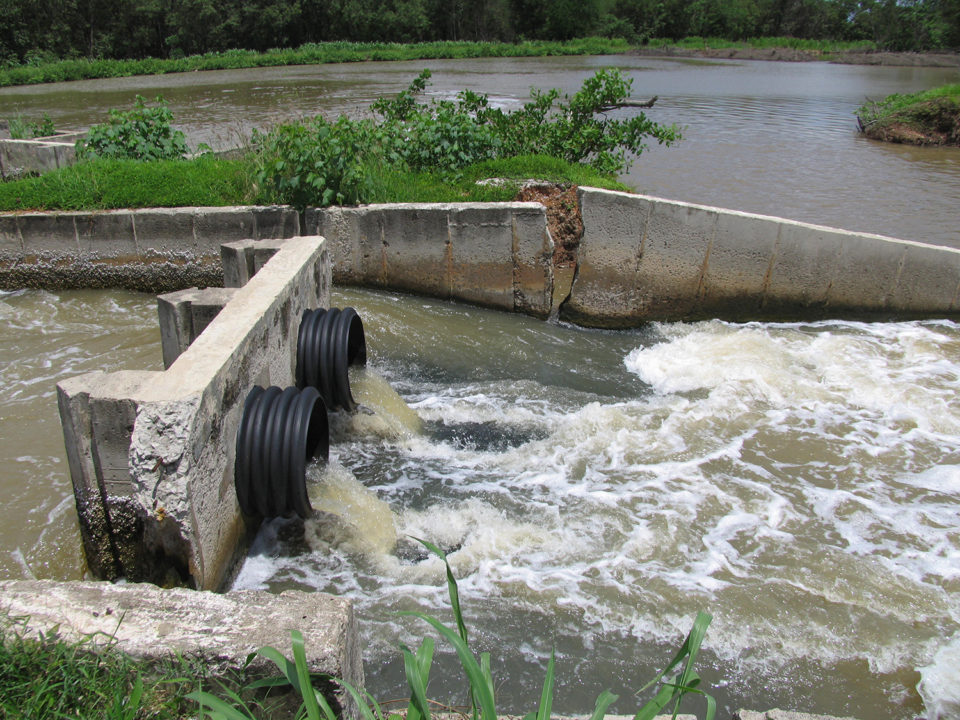
Other considerations
Excessive water flow flushes nutrients from ponds too quickly for phytoplankton blooms to develop. At water retention times less than two weeks, it may be difficult to obtain a good response to fertilization.
High calcium concentration (hardness) and pH above 8 favor precipitation of phosphate as calcium phosphate. Research done years ago at Malacca, Malaysia, and Auburn, Alabama (USA), in waters of 30 to 40 mg/L hardness and at several places in Israel where hardness was 200 to 300 mg/L revealed that to obtain similar fish production among the three locations, almost three times as much phosphorus fertilization was required in Israel.
There is no clear evidence that fertilization with potassium, calcium, magnesium, sulfate, or trace elements is generally necessary. However, phytoplankton production in seawater is frequently limited by a shortage of iron. Fertilizers for coastal aquaculture ponds might possibly be improved by addition of chelated iron. This would significantly increase fertilizer cost, and the hypothesis has not been proven through research.
Fertilizers are water soluble, but phosphate fertilizers, including ammonium phosphates, are not quickly soluble. Only 5 to 15 percent of phosphorus in these fertilizers dissolves while settling through a 2-meter column of water. These fertilizers dissolve in 30 minutes to 1 hour at the pond bottom, but contact with bottom soil results in rapid sequestration of phosphorus.
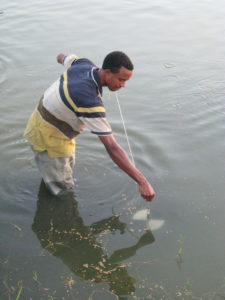
Liquid (fluid) fertilizers such as ammonium polyphosphate (10-34-0 to 13-38-0) are an alternative to granular fertilizers. They are more expensive than liquid fertilizers and considerably denser than water with a density of about 1.4 grams per cubic centimeter. Liquid fertilizers must be diluted to prevent them from settling quickly to the bottom. Granular fertilizers can be pre-dissolved in a container of water and splashed over the pond surface – a procedure as simple and cheaper than using liquid fertilizer.
Fertilization leads to increased concentrations of organic matter in pond bottoms. This increases the rate of dissolved oxygen consumption by bacteria that continues slowly during the winter. Ice cover – especially if accompanied by a layer of snow on the ice surface – limits light for photosynthesis, and dissolved oxygen depletion occurs in the water under the ice. This phenomenon causes winter kill fish mortalities and restricts the use of fertilizers in cold climates.
Non-aerated aquaculture ponds more than 2 meters in depth may stratify thermally in warm weather. If sudden destratification results from cold fronts with cold rain and heavy winds, mixing of the deeper oxygen-deficient, organic matter-laden water with surface water can lead to low dissolved oxygen concentration and fish kills.
Excessive phytoplankton blooms lead to thermal stratification and low nighttime concentration in non-aerated ponds. Usually, if the main source of turbidity in ponds is plankton, a Secchi disk visibility less than 20 to 30 cm should be avoided by regulating fertilizer applications. A lower Secchi disk visibility is a harbinger of low, early-morning dissolved oxygen concentration.
Fertilizers often are used early in the crop in ponds with feeding to encourage natural food organisms for fish fingerlings and shrimp postlarvae not as efficient as larger life stages in using pelleted feed. When feeding rates reach 10 to 20 kg/ha/day, there usually will be enough nutrients from the feed to sustain a phytoplankton bloom and fertilization can be ceased.
Silicate fertilization of shrimp ponds can encourage diatoms as shown in studies where silicate concentrations of about 2 mg/L were increased by addition of 1 mg/L silicate. Many shrimp farmers want a high percentage of diatoms in the phytoplankton and small amounts of silicate are included in some fertilizers. Silicate is not very soluble, and at least 30 to 50 kg/ha of sodium or calcium silicate would be necessary to elevate silicate concentrations by 1 mg/L. The optimum concentration of silicate in pond water is not known, and the ambient silicate concentration varies among regions. Little definitive can be said of silicate fertilization other than that small applications are not effective even if silicate concentration is low.
Perspectives
Pond fertilization with commercial fertilizers is a complex topic. There is no objective way of determining the ideal fertilization rate for an individual pond; it is established by a try-and-see-what-happens method. Other uncertainty about fertilizer effectiveness can be minimized by heeding the discussion above.
Now that you've reached the end of the article ...
… please consider supporting GSA’s mission to advance responsible seafood practices through education, advocacy and third-party assurances. The Advocate aims to document the evolution of responsible seafood practices and share the expansive knowledge of our vast network of contributors.
By becoming a Global Seafood Alliance member, you’re ensuring that all of the pre-competitive work we do through member benefits, resources and events can continue. Individual membership costs just $50 a year.
Not a GSA member? Join us.
Author
-

Claude E. Boyd, Ph.D.
School of Fisheries, Aquaculture and Aquatic Sciences
Auburn University
Auburn, Alabama 36849 USA
Tagged With
Related Posts
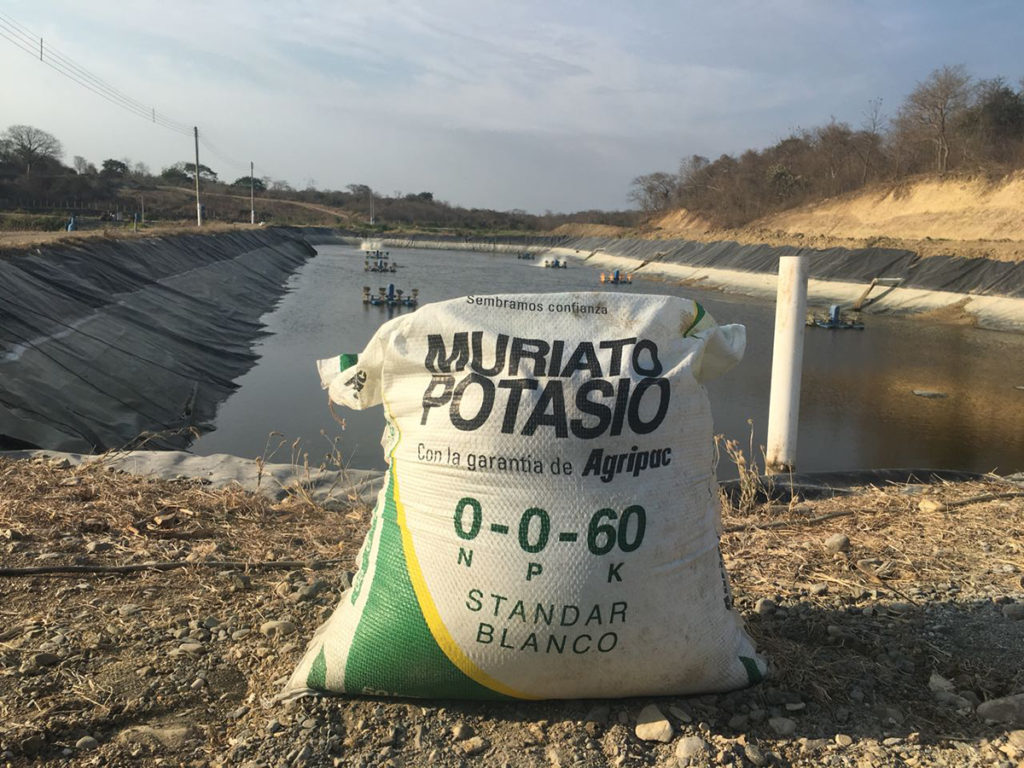
Responsibility
Properties of common commercial fertilizers in aquaculture
Commercial nitrogen and phosphorus fertilizers are widely used in aquaculture production systems to stimulate phytoplankton growth and the food web that provides natural food organisms beneficial to stocked fish fry and shrimp postlarvae.
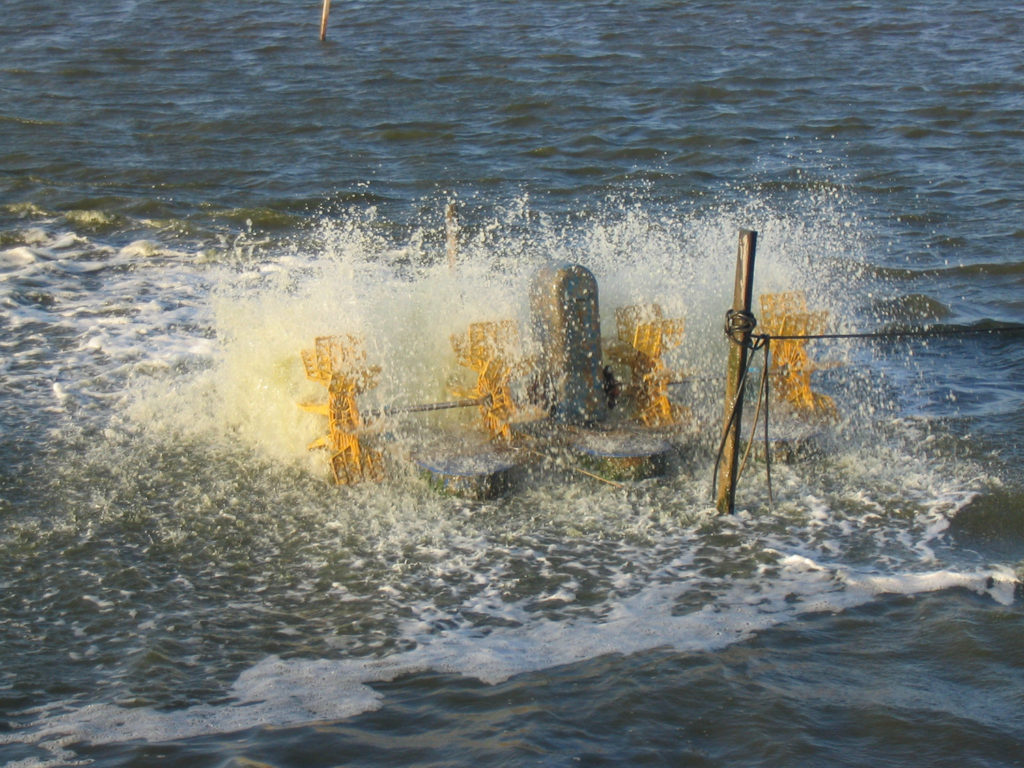
Health & Welfare
Phytoplankton and its impact on water quality
Phytoplankton has several important effects on water quality, including removing ammonia nitrogen from water and absorbing nutrients from the water for its growth. Abundance of blue-green algae tends to increase as nutrient inputs in aquafeeds or fertilizers increase.
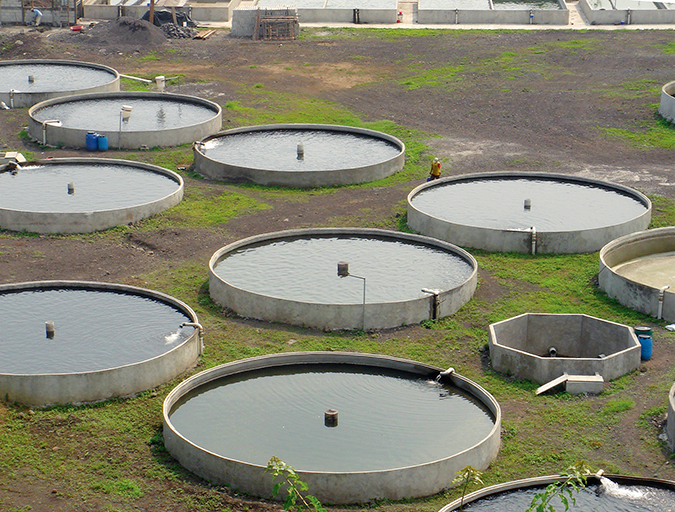
Responsibility
Calcium and magnesium use in aquaculture
Aquatic plants and animals get the essential nutrients calcium and magnesium from water and food. Calcium concentrations impact the hydration and development of eggs in a hatchery, where calcium carbonate precipitation can be troublesome.
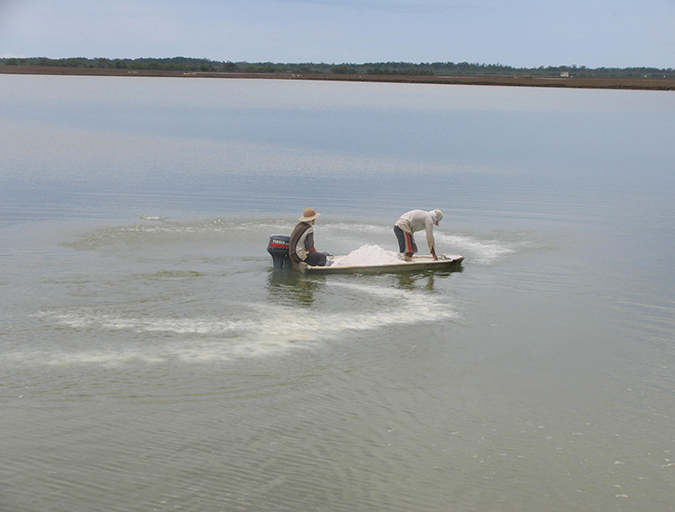
Responsibility
The importance of liming materials in aquaculture
Liming is an important management tool for preparing aquaculture ponds between and during production cycles. Several products are sometimes used in aquaculture for liming production ponds, including agricultural limestone, calcium silicate (CaSiO3) and sodium bicarbonate (NaHCO3).


